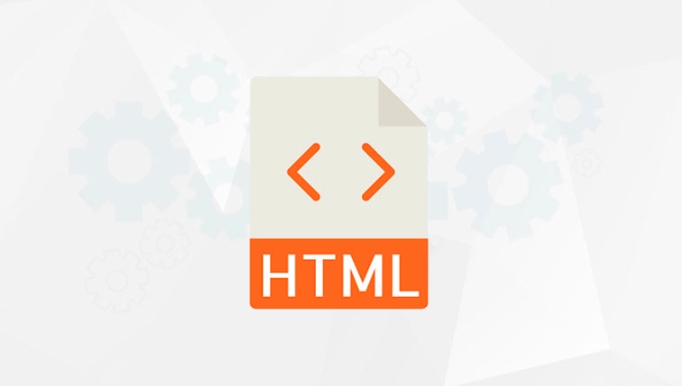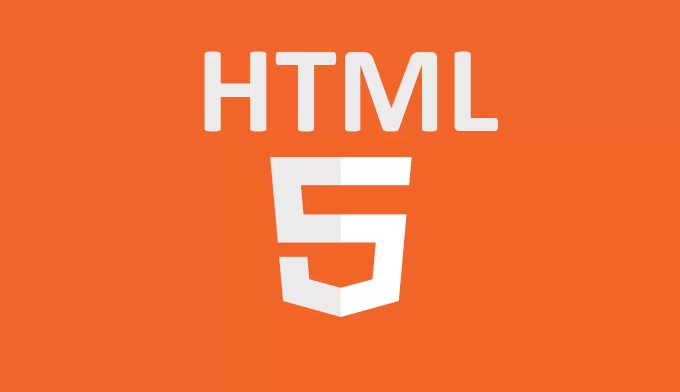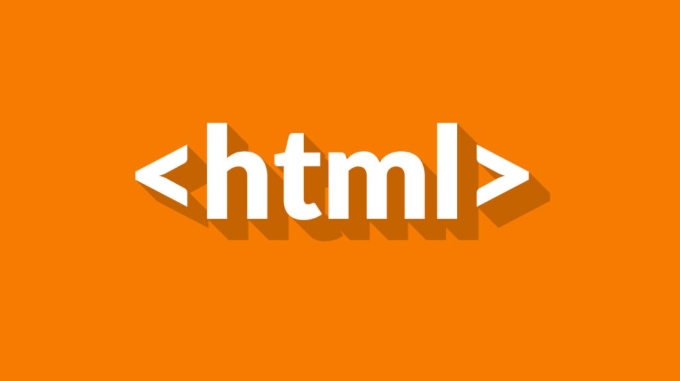Using Bootstrap 5 with HTML5 for front-end development is very direct and efficient. 1. Introducing Bootstrap 5 can be used by CDN, local files or construction tools. It is recommended that beginners use CDN; 2. Combining HTML5 semantic tags such as <header>, <nav>, <main>, etc. to improve structural clarity and SEO-friendliness, and paired with Bootstrap's layout classes to achieve responsive design; 3. Using Bootstrap 5 components such as modal boxes, navigation bars, etc. to enhance interactive functions, pay attention to ensuring that JS files are correctly introduced and initialized. Once you master these core points, you can quickly build modern and responsive web projects.

Using Bootstrap 5 with HTML5 for front-end development is actually quite straightforward. They are both easy and modern, and are suitable for most web projects. The key is how to correctly introduce the structure and resources, and then combine the semantic tags of HTML5 to write a clear and responsive page.

How to introduce Bootstrap 5
There are several common ways to use Bootstrap 5: CDN, local files, or through build tools such as Webpack, Vite, etc. For most beginners or simple projects, it is recommended to load with CDN.
<!-- Introducing CSS in HTML file head --> <link href="https://cdn.jsdelivr.net/npm/bootstrap@5.3.0/dist/css/bootstrap.min.css" rel="stylesheet"> <!-- JS is placed at the bottom of the body --> <script src="https://cdn.jsdelivr.net/npm/bootstrap@5.3.0/dist/js/bootstrap.bundle.min.js"></script>
If you want to customize the theme or use it offline, you can download the Bootstrap source code package or install it through npm:

- Download the compiled version (available directly)
- Install using npm:
npm install bootstrap - Sass and build process support is required when customizing variables and components
Note: Bootstrap 5 has completely removed the jQuery dependency, so no additional loading of jQuery is required.
Combined with HTML5 semantic tag layout
HTML5 provides semantic tags such as <header> , <nav> , <main> , <section> , <article> , <footer> , which can make the page structure clearer and SEO and accessibility friendly.

You can use these tags with Bootstrap's container classes ( .container , .row , .col-* ). For example, a typical page structure might look like this:
<header class="bg-primary text-white p-3">
<h1>My website</h1>
</header>
<nav class="navbar navbar-expand-lg navbar-dark bg-dark">
<!-- Navigation Content-->
</nav>
<main class="container my-4">
<div class="row">
<div class="col-md-8">
<section>
<h2>Article Title</h2>
<p>This is the main content...</p>
</section>
</div>
<div class="col-md-4">
<aside>
<h3>Sidebar</h3>
<ul class="list-group">
<li class="list-group-item">Link 1</li>
<li class="list-group-item">Link 2</li>
</ul>
</aside>
</div>
</div>
</main>
<footer class="bg-light text-center py-3">
<p>© 2025 My company</p>
</footer>This method makes the structure clear and responsive layout easier to control.
Enhance interactivity with Bootstrap components
Bootstrap 5 provides a wealth of components, such as buttons, navigation bars, modal boxes, carousels, etc., which basically cover common UI needs.
For example, a simple modal box requires just a little HTML and calls JavaScript initialization:
<!-- Trigger button-->
<button type="button" class="btn btn-primary" data-bs-toggle="modal" data-bs-target="#exampleModal">
Open pop-up window</button>
<!-- Modal Box-->
<div class="modal fade" id="exampleModal" tabindex="-1" aria-labelledby="exampleModalLabel" aria-hidden="true">
<div class="modal-dialog">
<div class="modal-content">
<div class="modal-header">
<h5 class="modal-title">Tip</h5>
<button type="button" class="btn-close" data-bs-dismiss="modal" aria-label="Close"></button>
</div>
<div class="modal-body">
This is the content of the modal box.
</div>
<div class="modal-footer">
<button type="button" class="btn btn-secondary" data-bs-dismiss="modal">Close</button>
</div>
</div>
</div>
</div>Make sure you have correctly introduced the Bootstrap JS file, otherwise these interactive features will not take effect.
In addition, many components can also control behavior through JavaScript, such as dynamically opening/closing, listening to events, etc. There are detailed instructions in the document. It is recommended to check the official documents of the corresponding components when encountering specific needs.
Basically that's it. As long as the structure is well established, the style and interaction can be quickly realized. Developed with Bootstrap 5 HTML5, the parts that are not complicated but easily overlooked are the order of resource introduction, the rational use of semantic tags, and whether the JS plug-in is initialized correctly.
The above is the detailed content of Using Bootstrap 5 with HTML5. For more information, please follow other related articles on the PHP Chinese website!

Hot AI Tools

Undress AI Tool
Undress images for free

Undresser.AI Undress
AI-powered app for creating realistic nude photos

AI Clothes Remover
Online AI tool for removing clothes from photos.

Clothoff.io
AI clothes remover

Video Face Swap
Swap faces in any video effortlessly with our completely free AI face swap tool!

Hot Article

Hot Tools

Notepad++7.3.1
Easy-to-use and free code editor

SublimeText3 Chinese version
Chinese version, very easy to use

Zend Studio 13.0.1
Powerful PHP integrated development environment

Dreamweaver CS6
Visual web development tools

SublimeText3 Mac version
God-level code editing software (SublimeText3)

Hot Topics
 Audio and Video: HTML5 VS Youtube Embedding
Jun 19, 2025 am 12:51 AM
Audio and Video: HTML5 VS Youtube Embedding
Jun 19, 2025 am 12:51 AM
HTML5isbetterforcontrolandcustomization,whileYouTubeisbetterforeaseandperformance.1)HTML5allowsfortailoreduserexperiencesbutrequiresmanagingcodecsandcompatibility.2)YouTubeofferssimpleembeddingwithoptimizedperformancebutlimitscontroloverappearanceand
 What is the purpose of the input type='range'?
Jun 23, 2025 am 12:17 AM
What is the purpose of the input type='range'?
Jun 23, 2025 am 12:17 AM
inputtype="range" is used to create a slider control, allowing the user to select a value from a predefined range. 1. It is mainly suitable for scenes where values ??need to be selected intuitively, such as adjusting volume, brightness or scoring systems; 2. The basic structure includes min, max and step attributes, which set the minimum value, maximum value and step size respectively; 3. This value can be obtained and used in real time through JavaScript to improve the interactive experience; 4. It is recommended to display the current value and pay attention to accessibility and browser compatibility issues when using it.
 Adding drag and drop functionality using the HTML5 Drag and Drop API.
Jul 05, 2025 am 02:43 AM
Adding drag and drop functionality using the HTML5 Drag and Drop API.
Jul 05, 2025 am 02:43 AM
The way to add drag and drop functionality to a web page is to use HTML5's DragandDrop API, which is natively supported without additional libraries. The specific steps are as follows: 1. Set the element draggable="true" to enable drag; 2. Listen to dragstart, dragover, drop and dragend events; 3. Set data in dragstart, block default behavior in dragover, and handle logic in drop. In addition, element movement can be achieved through appendChild and file upload can be achieved through e.dataTransfer.files. Note: preventDefault must be called
 How can you animate an SVG with CSS?
Jun 30, 2025 am 02:06 AM
How can you animate an SVG with CSS?
Jun 30, 2025 am 02:06 AM
AnimatingSVGwithCSSispossibleusingkeyframesforbasicanimationsandtransitionsforinteractiveeffects.1.Use@keyframestodefineanimationstagesforpropertieslikescale,opacity,andcolor.2.ApplytheanimationtoSVGelementssuchas,,orviaCSSclasses.3.Forhoverorstate-b
 HTML audio and video: Examples
Jun 19, 2025 am 12:54 AM
HTML audio and video: Examples
Jun 19, 2025 am 12:54 AM
Audio and video elements in HTML can improve the dynamics and user experience of web pages. 1. Embed audio files using elements and realize automatic and loop playback of background music through autoplay and loop properties. 2. Use elements to embed video files, set width and height and controls properties, and provide multiple formats to ensure browser compatibility.
 What is WebRTC and what are its main use cases?
Jun 24, 2025 am 12:47 AM
What is WebRTC and what are its main use cases?
Jun 24, 2025 am 12:47 AM
WebRTC is a free, open source technology that supports real-time communication between browsers and devices. It realizes audio and video capture, encoding and point-to-point transmission through built-in API, without plug-ins. Its working principle includes: 1. The browser captures audio and video input; 2. The data is encoded and transmitted directly to another browser through a security protocol; 3. The signaling server assists in the initial connection but does not participate in media transmission; 4. The connection is established to achieve low-latency direct communication. The main application scenarios are: 1. Video conferencing (such as GoogleMeet, Jitsi); 2. Customer service voice/video chat; 3. Online games and collaborative applications; 4. IoT and real-time monitoring. Its advantages are cross-platform compatibility, no download required, default encryption and low latency, suitable for point-to-point communication
 How to create animations on a canvas using requestAnimationFrame()?
Jun 22, 2025 am 12:52 AM
How to create animations on a canvas using requestAnimationFrame()?
Jun 22, 2025 am 12:52 AM
The key to using requestAnimationFrame() to achieve smooth animation on HTMLCanvas is to understand its operating mechanism and cooperate with Canvas' drawing process. 1. requestAnimationFrame() is an API designed for animation by the browser. It can be synchronized with the screen refresh rate, avoid lag or tear, and is more efficient than setTimeout or setInterval; 2. The animation infrastructure includes preparing canvas elements, obtaining context, and defining the main loop function animate(), where the canvas is cleared and the next frame is requested for continuous redrawing; 3. To achieve dynamic effects, state variables, such as the coordinates of small balls, are updated in each frame, thereby forming
 How to check if a browser can play a specific video format?
Jun 28, 2025 am 02:06 AM
How to check if a browser can play a specific video format?
Jun 28, 2025 am 02:06 AM
To confirm whether the browser can play a specific video format, you can follow the following steps: 1. Check the browser's official documents or CanIuse website to understand the supported formats, such as Chrome supports MP4, WebM, etc., Safari mainly supports MP4; 2. Use HTML5 tag local test to load the video file to see if it can play normally; 3. Upload files with online tools such as VideoJSTechInsights or BrowserStackLive for cross-platform detection. When testing, you need to pay attention to the impact of the encoded version, and you cannot rely solely on the file suffix name to judge compatibility.






